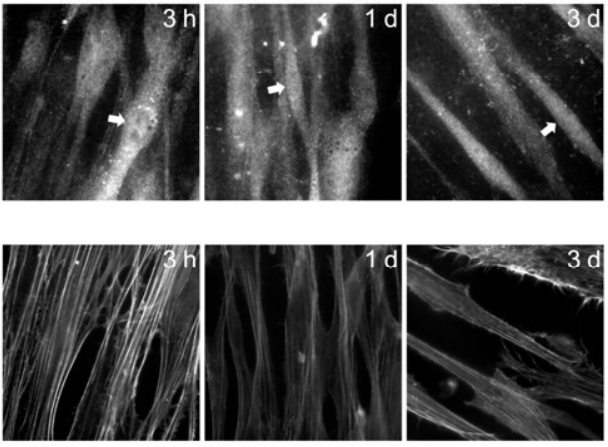PhotoCol and Glycosil Tunable Hydrogels
09/20/23
Publication Title:
Targeting YAP Mechanosignaling to Ameliorate Stiffness-Induced Schlemm's Canal Cell Pathobiology
Advanced BioMatrix Products Used:
PhotoCol® Methacrylated Collagen
HyStem® Thiolated Hyaluronic Acid
How the products were used:
PhotoCol® Methacrylated Collagen and HyStem® Thiolated Hyaluronic Acid were combined to create a tunable-stiffness hydrogel for investigating how ECM stiffening modulates YAP activity.

Article Abstract:
The current drug development pipeline takes approximately fifteen years and $2.6 billion to get a new drug to market. Typically, drugs are tested on two-dimensional (2D) cell cultures and animal models to estimate their efficacy before reaching human trials. However, these models are often not representative of the human body. The 2D culture changes the morphology and physiology of cells, and animal models often have a vastly different anatomy and physiology than humans. The use of bioengineered human cell-based organoids may increase the probability of success during human trials by providing human-specific preclinical data. They could also be deployed for personalized medicine diagnostics to optimize therapies in diseases such as cancer.
However, one limitation in employing organoids in drug screening has been the difficulty in creating large numbers of homogeneous organoids in form factors compatible with high-throughput screening (e.g., 96- and 384-well plates). Bioprinting can be used to scale up deposition of such organoids and tissue constructs. Unfortunately, it has been challenging to 3D print hydrogel bioinks into small-sized wells due to well–bioink interactions that can result in bioinks spreading out and wetting the well surface instead of maintaining a spherical form.
Here, we demonstrate an immersion printing technique to bioprint tissue organoids in 96-well plates to increase the throughput of 3D drug screening. A hydrogel bioink comprised of hyaluronic acid and collagen is bioprinted into a viscous gelatin bath, which blocks the bioink from interacting with the well walls and provides support to maintain a spherical form. This method was validated using several cancerous cell lines, and then applied to patient-derived glioblastoma (GBM) and sarcoma biospecimens for drug screening.



